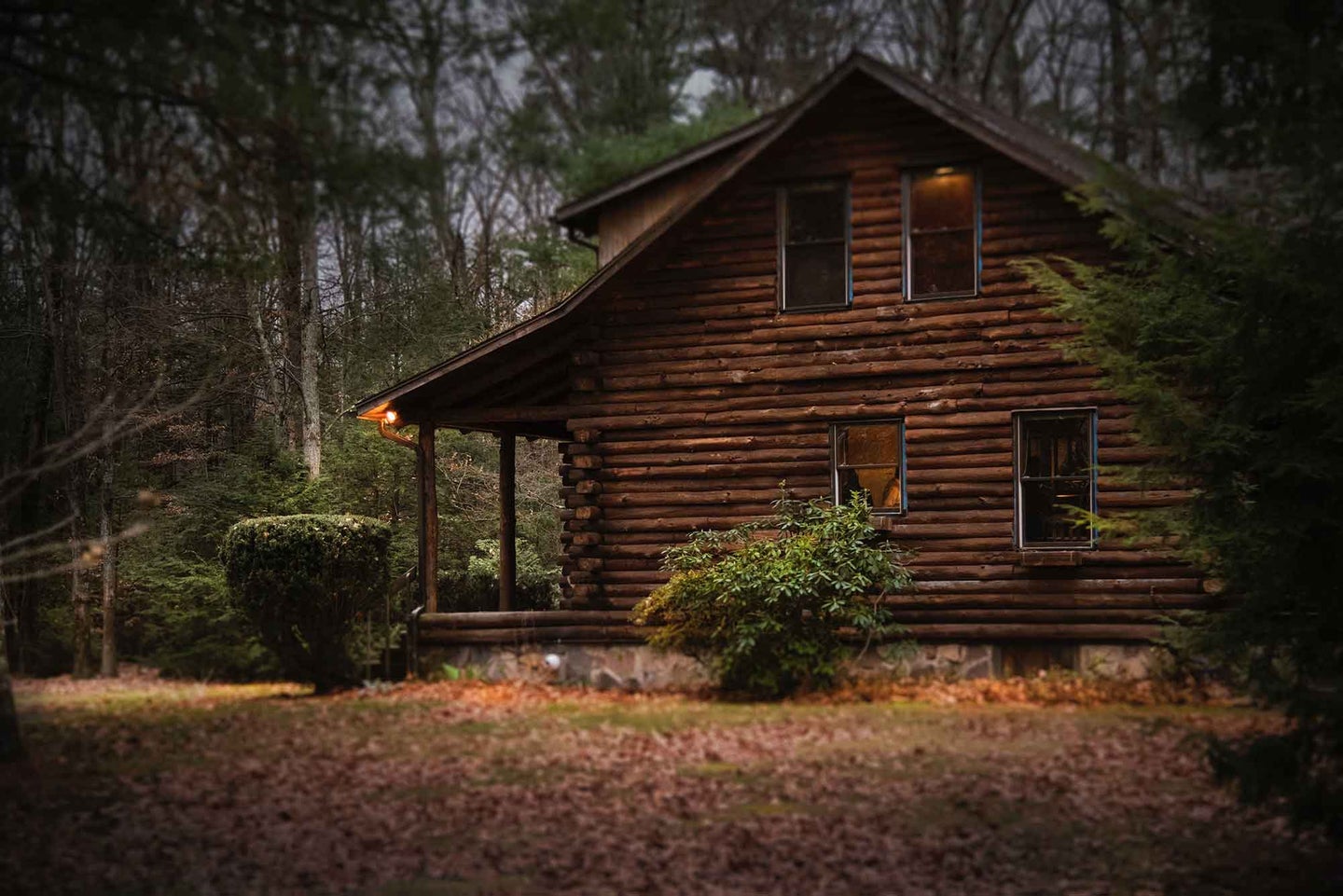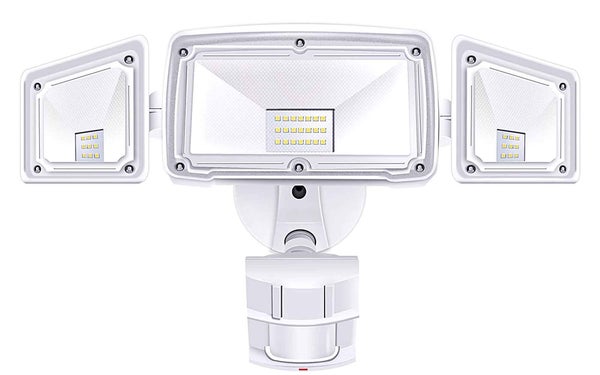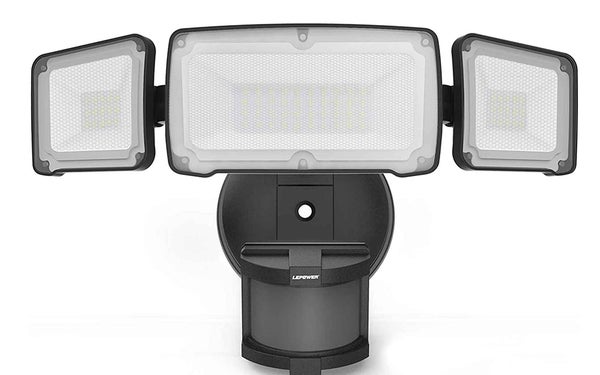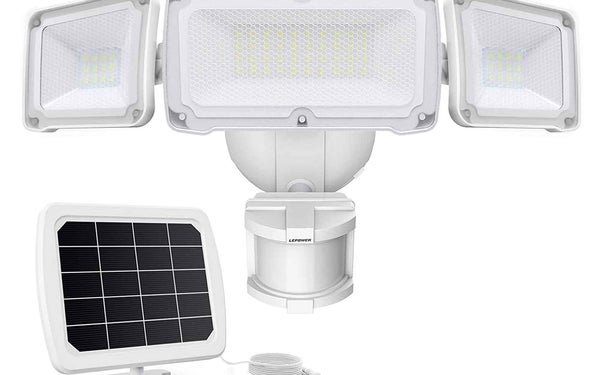Three Things to Consider Before You Buy an LED Floodlight
The little economical bulbs work extremely well in floodlights—but not all LED floodlights work the same way.

We may earn revenue from the products available on this page and participate in affiliate programs. Learn more ›
Nothing beats a floodlight when it comes to providing plenty of light outside at nighttime. And LED light technology has advanced to the point where the little economical bulbs will do a fantastic job of lighting up the spaces that you want covered. That means plenty of light at a very low energy cost (and in the case of solar-powered floods, little battery expenditure).
But LED floodlights vary in what they can’t and can’t do. Here are three things to think about before buying an LED floodlight.
Extremely bright and has three settings: always-on, dawn to dusk, and movement detection. Amico
If you want to use the LED floodlight to illuminate a work area or play space in the daytime, make sure your floodlight has an “always on” setting. Some that have an always-on capability also come with a dusk-to-dawn setting. That’s a great benefit if you want to use it to illuminate an outdoor area or space, since you then won’t have to turn it on and off.
It’ll detect movement up to 72 feet away from where it’s mounted, in a 180-degree arc. LEPOWER
A floodlight works well as a security light because it illuminates a large area. But that’s only going to happen if the floodlight’s motion detector can reach the action. That could be many feet away from where the floodlight is mounted—or to the side of it. Check the specs on the floodlight to make sure it will provide the coverage you need.
The 20-foot cord allows you to place the panel in an optimal location and angle for sunlight exposure. LEPOWER
If you want to use the floodlight to illuminate the area around an outbuilding or a camp without electricity, or any place where electrical service isn’t reliable, a solar-powered floodlight is the solution. Look for a floodlight with a long cable connecting the solar panel to the floodlight, so you can place the panel in a place that exposes it to the maximum amount of sunshine. That also means you can use the floodlight inside of a structure that’s not wired for electricity, such as a shed. Mount the light inside, put the solar panel outside, and you’re ready to go.


